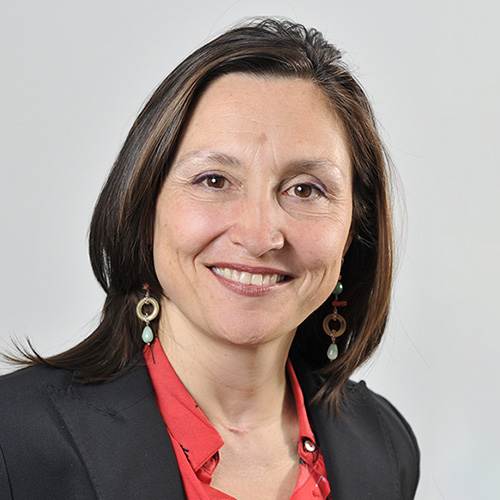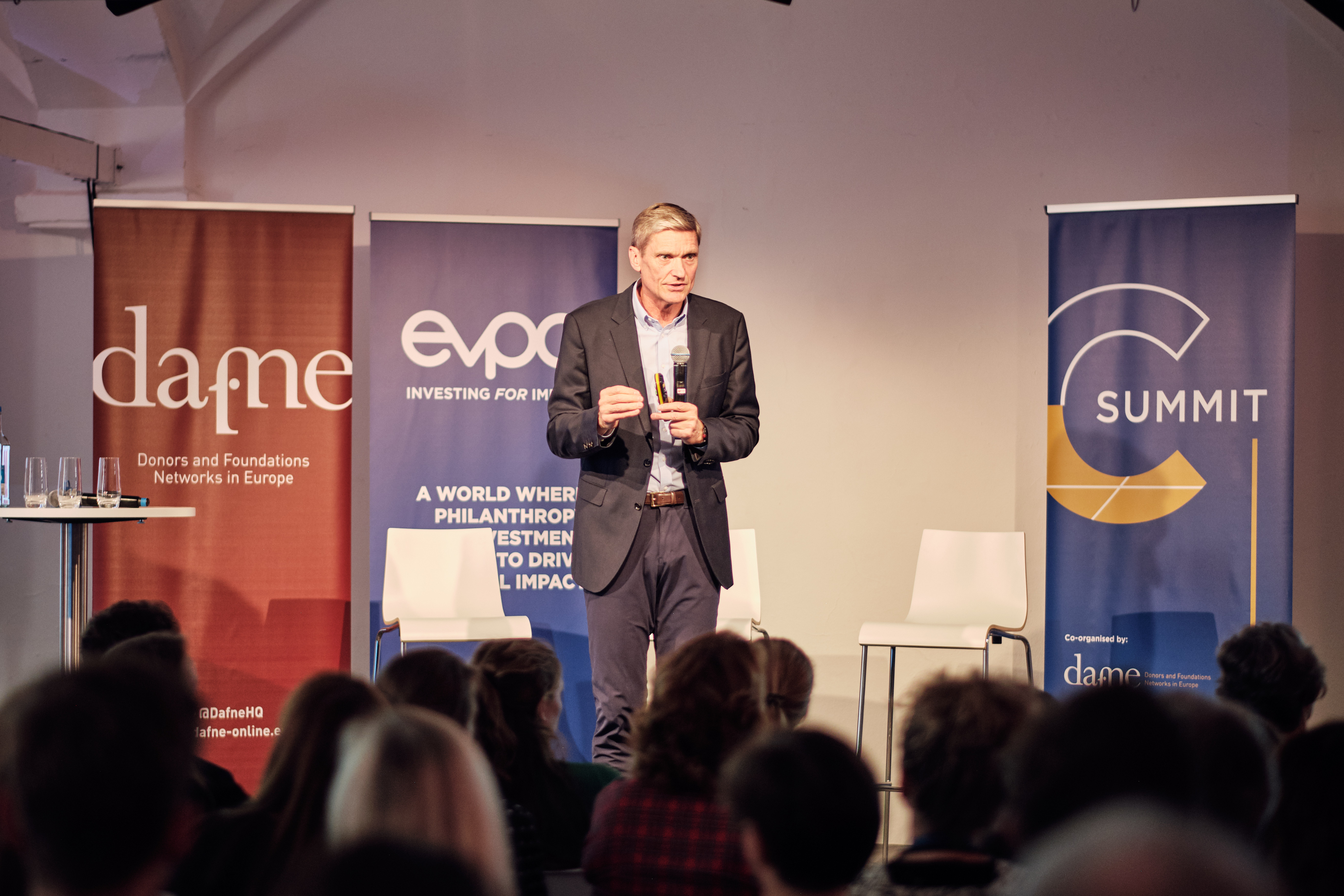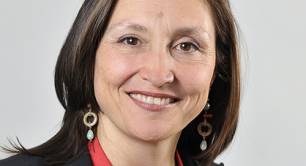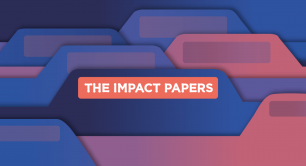Exclusive interview: ‘Let’s shoot for the stars, then we'll find the resources to get there’ - EVPA boss Roberta Bosurgi
This year collaboration has been more vital than ever – but that doesn’t mean it happens easily, something Roberta Bosurgi knows first-hand. As the new head of EVPA, which since 2004 has been building a community of venture philanthropists and social investors, she’s now tasked with convincing others to overcome their “ego” and do the hard work of joining forces to achieve long-term impact. Ahead of EVPA’s C Summit this week – a key opportunity to bring together influential players in the corporate and philanthropic world – Pioneers Post sits down with the former Novartis director.
 The European Venture Philanthropy Association’s new CEO is suitably European. Roberta Bosurgi is Italian-born, has lived in the UK and Switzerland, and this year moved to Brussels – mid-pandemic – to take up the top job at EVPA.
The European Venture Philanthropy Association’s new CEO is suitably European. Roberta Bosurgi is Italian-born, has lived in the UK and Switzerland, and this year moved to Brussels – mid-pandemic – to take up the top job at EVPA.
Such internationalism is commonplace on CVs in the EU capital. A little more unusual – and just as apt for EVPA’s current priorities – is a career that spans big business and corporate philanthropy, including seven years at Basel-headquartered pharmaceutical company Novartis, followed by three years at the Novartis Foundation.
That means Bosurgi is all too aware of the real-world barriers to collaboration across sectors, even while she and her colleagues are beating the drum for that very cause. At Novartis Foundation, she recalls working on a “collective impact effort”, which aimed to get the public sector, corporate foundations and other philanthropic organisations to team up to improve cardiovascular health in low-income areas.
I know how many times we had to give up on a partnership because it was really difficult to move the needle
“I know how many times we had to give up, because it was really difficult to move the needle,” she says. “At some point you face the trade-off: do I move forward [without a partnership] and have a little impact, or do I spend another year negotiating? And sometimes we opt for the first option.”
That first option is often a short-term solution, though. Philanthropic organisations need to commit to the hard work involved in joining forces, she says; without it, “we will just have minor symptomatic relief, rather than addressing a problem for the long term”.
C Summit: breaking silos
Collaboration is a buzzword; few self-respecting foundations or impact investors these days fail to declare it as part of their strategy. But Bosurgi maintains there’s still much more talk than action. Ego may be an even bigger issue in the private sector, but it’s a “plague” within the philanthropic sector, too.
“There are still many organisations out there, as in the corporate world, that have a very single-minded focus on one cause. If there's something we have learned over the last ten or 15 years it is that these problems are complex, and cannot be solved by one organisation…. If one organisation is too focused on the single area where they want to demonstrate impact, that gets in the way of collaboration. Because then you come very quickly to the point of: ‘What's in it for me? How can I then demonstrate the impact of my organisation, if we are joining forces?’. And for me, that's when the ego becomes disruptive and can really slow down progress to address the root causes of a problem.”
If an organisation is too focused on a single area, that gets in the way of collaboration. Because then you come quickly to: ‘What's in it for me?
Bosurgi reiterates that collaboration is “super difficult”. Making it a little easier, and a little more tempting, is the main hope of this week’s C Summit, an online gathering hosted by EVPA and the Donors and Foundations Networks in Europe (Dafne) for Europe’s corporate social investors and philanthropists.
Corporate social investors – such as corporate foundations, shareholder foundations or corporate impact funds – “offer a great opportunity to break the silos”, says Bosurgi: they can leverage corporate assets while bringing a nonprofit mindset into the mix; they can join forces much more easily than parent firms wary of competitors or conflicts of interest.

Above: Erik Fyrwald, CEO of global agrochemicals company Syngenta, speaking at the first C Summit, held in Munich in September 2019
The CEO hopes the C Summit will showcase successful models of collaboration and impact – such as such as the #WirVsVirus (WeVsVirus) hackathon, in which the German government, corporate social investors (among them EVPA member the Vodafone Institute for Society and Communications), companies, civil society organisations, and individuals got together to find solutions to the fallout of the Covid-19 pandemic. With 28,000 participants generating 1,500 solutions, the hackathon became the world’s largest to date.
The summit also aims to help raise the voice and visibility of such corporate social investors, ultimately encouraging others to join the space too. That notion of voice, for the impact investing industry in general, is a second big theme on Bosurgi’s fresh to-do list (as well as the subject of her first speech as CEO at EVPA’s annual conference in September).
“I think it's very important to have one loud voice behind investing for impact,” she says. “There is amazing work and examples out there. But it's still in pockets and the voice comes across as very fragmented. And now it's time to rebuild back with the broader economic system, but with a seat at the table in which our voices are clearly heard.”
Dreaming big
Another priority is to raise ambitions, which Bosurgi believes are too restrained by available resources. Instead, she says, we need to figure out the goal, then find the means to get there.
“This way of thinking is very common in the private sector, you start from, what are you trying to achieve? Where are you trying to go? And then you build a plan to go for that,” she says. “In the philanthropic sector, we are used to being very resource-strapped, and therefore you don't dare to shoot for the stars. That's my dream – let’s shoot for the stars, and then we'll find the resources to get there.”
The voice of investing for impact comes across as very fragmented
Where in Europe does Bosurgi see the most interesting developments in investing for impact? France has a “wealth of amazing and exciting initiatives”, with significant government support for innovation in social investment; there is also “a lot of momentum and a lot of energy and buzz” in the lesser-developed markets of Spain and Portugal. Of the UK – perhaps the region’s most mature impact investing market – Bosurgi says members there remain keen to connect with overseas counterparts post-Brexit, while EVPA itself “relies a lot” on UK organisations to continue sharing their experience. (EVPA has a broad geographical definition of Europe; it has many members in non-EU countries, plus some outside of Europe.)
Across all these varied markets, EVPA’s key role is to help “distil the key learning and insights” for its 320 members.
“When we started our journey 16 years ago, there was very little in Europe, and EVPA was instrumental to putting down the foundation of the investing for impact ecosystem,” says Bosurgi. Since then, sister networks in Latin America, Asia, and Africa have all been set up, united under the umbrella of the International Venture Philanthropy Center, hoping, like their members, to share valuable lessons across borders.
“As a network organisation, we have the responsibility to lead the ecosystem towards the next stage, where collaboration and networking goes deeper to mobilise resources,” she says. “It's going to be the key challenge for us as a team and as a network. And I'm very excited to be taking that on.”
Pioneers Post is a media partner of the C Summit, which takes place online on 3-4 December. Check back soon for more coverage, and find the full agenda and registration details here.




